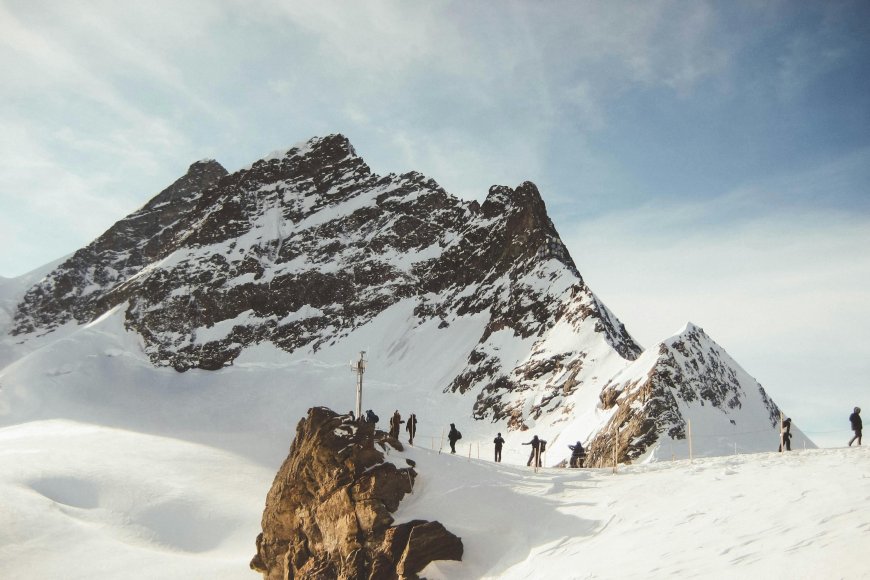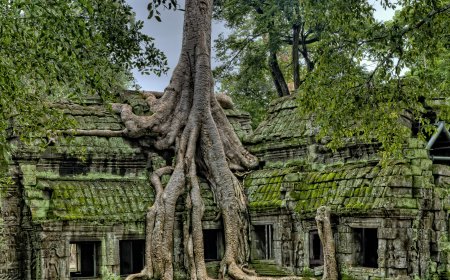The most important precautions when mountain climbing
Mountain climbing requires taking many precautions to ensure safety and success. Climbers must meticulously plan in advance, use appropriate equipment such as ropes and helmets, and ensure the availability of sufficient food and water supplies. They should also understand weather conditions and assess risks accurately, as well as train in safety techniques and first aid. Climbers avoid reckless adventures and handle challenging terrains with caution, being prepared to deal with any emergencies that may arise during their journey.

Mountain climbing requires taking many precautions to ensure safety and success. Climbers must meticulously plan in advance, use appropriate equipment such as ropes and helmets, and ensure the availability of sufficient food and water supplies. They should also understand weather conditions and assess risks accurately, as well as train in safety techniques and first aid. Climbers avoid reckless adventures and handle challenging terrains with caution, being prepared to deal with any emergencies that may arise during their journey.
The most important precautions when mountain climbing
When considering mountain climbing, it's essential to focus on the fundamental precautions that must be taken to ensure safety and success in this thrilling experience. Here are some key precautions to keep in mind:
1. Pre-planning: Before embarking on a climbing trip, prepare a detailed plan that includes estimates for time, distance, required equipment, and expected weather conditions. This helps in identifying the appropriate route and ensuring full preparedness.
2. Proper equipment usage: Make sure to use appropriate and proper mountain climbing equipment such as ropes, helmets, harnesses, and other necessary tools for safety and stability.
3. Understanding weather conditions: It's important to understand the expected weather conditions and assess how they might impact your trip, including estimating the risks of thunderstorms, snow, and strong winds.
4. Risk assessment and sound decision-making: Climbers should assess potential risks and make sound decisions based on these assessments, such as withdrawing in case of danger signs or changes in weather conditions.
5. Training and experience: Before setting off on a climbing journey, climbers should obtain sufficient training and gain the necessary experience in climbing, safety techniques, and first aid.
6. Environmental protection: Climbers should respect the natural environment and follow sustainable climbing principles, such as leaving the places they visit as they found them and avoiding environmental pollution.
7. Communication and reporting: Climbers should inform someone about the details of their trip, including the planned route and expected return time, and stay in communication using appropriate communication means such as mobile phones or wireless transmitters.
Keys to success in mountain climbing
Mountain climbing is an exciting and thrilling challenge that requires many keys to ensure success and safety during these strenuous journeys. Here are some key factors to consider to ensure a successful climbing experience:
1. Detailed planning: One of the most important keys to the success of a mountain climbing trip is thorough and detailed planning. Every detail of the trip should be planned, including the planned ascent and descent routes, necessary supplies required, and expected return time.
2. Training and experience: Climbers should obtain sufficient training and gain the necessary experience in climbing techniques and safety. This includes training on the proper use of mountain climbing equipment and safe ascent and descent techniques.
3. Understanding weather conditions: The impact of weather conditions can be crucial on a climbing journey. Climbers should understand the expected weather conditions and assess how they will affect the trip, making sound decisions based on this.
4. Continuous risk assessment: Climbers should continuously assess risks during the journey and make sound decisions based on these assessments, such as changing the route in case of danger signs or unexpected changes in conditions.
5. Communication and cooperation: The success of a climbing trip also depends on good communication and cooperation among team members. Climbers should stay in touch and exchange information regularly, working as one team to achieve the common goal.
6. Flexibility and adaptation: It's important for climbers to be flexible and able to adapt to sudden challenges that may arise during the journey, such as changes in weather or unexpected route changes.
7. Maintaining physical and mental health: Climbers should take care of their physical and mental health before and during the trip, ensuring that they are in good condition for the physical and mental challenges they may face during climbing.
How do you protect yourself with the right precautions?
To protect yourself properly while mountain climbing, it's essential to follow a set of necessary precautions that help maintain safety and reduce the risk of injury or accidents. Here are some proper precautions to consider:
1. Use the right and proper equipment: Before starting the journey, make sure to inspect and check all mountain climbing equipment to ensure it is in good condition and suitable for use. This includes ropes, helmets, rock tools, and other necessary equipment.
2. Evaluate weather and weather conditions: Assess the weather conditions before starting the climb and determine whether they are suitable for climbing or not. Avoid climbing in the event of expected strong storms, heavy snowfall, or high winds.
3. Training and experience: Ensure you obtain the necessary training and gain experience in climbing techniques and safety before embarking on a climbing trip. This helps avoid potential dangers and risks.
4. Risk assessment and making sound decisions: Evaluate potential risks during the journey and make sound decisions based on this assessment, such as changing the route in case of danger signs or unexpected changes in conditions.
5. Communication and reporting: Ensure to stay in touch with team members and exchange information regularly, and inform a trusted person about the details of your trip, including the planned route and expected return time.
6. Maintain physical and mental health: Take care of your physical and mental health before and during the trip, ensuring that you are in good condition to face the physical and mental challenges that may arise during climbing.
7. Act cautiously and avoid risky adventures: Be cautious and avoid risky adventures that may endanger your life, always remember that safety is paramount during your mountain climbing journey.
Your mountain climbing plan
Planning a mountain climbing trip is a crucial step to ensure safety and success in this exhilarating experience. Here's how to plan your mountain climbing trip in detail:
1. Study the area and available routes: Start your journey by studying the area you plan to climb and exploring available routes. Gather information about the landscape, elevations, terrains, and any geological landmarks or significant sites that may be present in the area.
2. Define the goal and suitable route: Based on the previous study, define the goal you wish to climb and the most suitable route to reach it. Choose a route that fits your level of experience and climbing skills.
3. Estimate required time and distance: Estimate the time you will need to complete your journey and the distance you will cover. Use this information to determine the appropriate time to start and return.
4. Identify necessary equipment and supplies: Identify the equipment needed for your trip, such as ropes, helmets, appropriate climbing shoes, first aid tools, and sufficient food and water.
5. Inspect and maintain equipment: Ensure to inspect all equipment before embarking on the journey and perform any necessary maintenance to ensure your safety during climbing.
6. Study weather conditions: Study weather forecasts in the area and weather predictions for the days you plan to climb. Provide an alternative plan in case weather conditions change unexpectedly.
7. Communication and reporting: Inform a trusted person about the details of your trip, including the planned route and expected return time. Maintain a means of communication with the outside world, such as a mobile phone or wireless transmitter.
8. Training and physical preparedness: Engage in appropriate training before embarking on the trip, including improving physical fitness and training necessary body muscles for climbing and endurance.
By following these steps and meticulous planning, you can equip yourself optimally for mountain climbing safely and successfully.
Safely Climbing Mountains and Enjoying
Mountain climbing is an exhilarating and enjoyable experience, but it must be done safely to ensure your enjoyment of the trip without compromising your safety. Here's how to climb mountains safely and enjoy every moment:
1. Thorough planning: Before embarking on a climbing trip, meticulously plan and define the goal you want to achieve and the optimal route to reach it. Study the area, weather conditions, and terrain to be fully aware of the environment you will be climbing in.
2. Use proper equipment: Ensure to use proper and approved mountain climbing equipment, such as ropes, helmets, and other necessary tools for climbing. Make sure to inspect the equipment before the trip to ensure its safety.
3. Consider weather conditions: Understand the expected weather conditions and how they can impact your trip. Avoid climbing in bad weather such as thunderstorms or heavy snowfall, and be prepared to deal with sudden weather changes.
4. Continuous risk assessment: Continuously assess risks during the journey and make sound decisions based on these assessments. In case of danger signs or unexpected changes in conditions, make wise decisions to ensure your safety.
5. Communication and cooperation: Maintain good communication with team members and exchange information and updates regularly. Be a cohesive team and assist each other when needed.
6. Physical and mental preparation: Prepare physically and mentally before embarking on the trip. Train physical fitness and strengthen body muscles necessary for climbing, and maintain a positive spirit and self-confidence.
7. Respect nature and the environment: Respect the nature and environment around you and follow sustainable climbing principles. Leave places you visit as you found them and avoid harming local plants and animals.
By following these guidelines and applying proper precautions, you can enjoy mountain climbing safely and savor every moment of the journey.
Climber's Guide
Climber's Guide is a valuable source of information and guidance that climbers need to prepare and plan their mountain climbing trips safely and successfully.
1. Setting Goals and Routes: Before starting a climbing trip, identify the goal you want to reach and choose the most suitable route for climbing. Study the area, weather conditions, and terrain to determine the optimal path.
2. Physical and Mental Preparation: Prepare yourself physically and mentally before embarking on the journey. Train your physical fitness and strengthen the necessary body muscles for climbing, and maintain a positive spirit and self-confidence.
3. Using Proper Equipment: Make sure to use proper and approved mountain climbing equipment, such as ropes, helmets, and other necessary tools for climbing. Check the equipment before starting the trip to ensure its safety.
4. Studying Weather Conditions: Study weather forecasts in the area and weather estimates for the days you plan to climb. Provide an alternative plan in case weather conditions change unexpectedly.
5. Risk Assessment and Decision Making: Continuously assess risks during the trip and make sound decisions based on these assessments. Make wise decisions to ensure your safety.
6. Communication and Collaboration: Maintain good communication with team members and exchange information and updates regularly. Be a cohesive team and assist each other when needed.
7. Respecting the Environment and Nature: Respect the surrounding nature and environment, and follow sustainable climbing principles. Leave the places you visit as you found them and avoid harming local plants and animals.
8. First Aid: Learn and carry necessary first aid supplies to provide emergency care when needed.
By following this guide, climbers can enjoy mountain climbing safely and prepare well for the challenges they may face during the trip.
Facing the challenge with confidence
Facing challenges with confidence is crucial when it comes to mountain climbing, as this sport requires courage and readiness to tackle the challenges that climbers may encounter along the way. Here's how you can face challenges with confidence while mountain climbing:
1. Physical and mental preparation: Before embarking on a climbing trip, ensure that you have sufficient physical fitness and the ability to endure physical exertion. Also, be mentally prepared to face the challenges and difficulties that await you on the journey.
2. Develop technical skills: Climbers must improve their climbing skills and acquire the necessary knowledge about climbing techniques and proper use of mountaineering equipment. This enables them to confidently navigate difficult terrains and risky situations.
3. Thorough planning: Precise planning is essential for every aspect of the trip, including identifying the appropriate route, estimating the required time, and assessing potential risks. This allows climbers to feel confident in the decisions they make during the journey.
4. Communication and collaboration: Climbers should engage in continuous communication with team members and exchange information and updates regularly. They should also support each other and collaborate when assistance is needed.
5. Managing fear and tension: Climbers should effectively deal with fear and tension through breathing techniques, meditation, focusing on the goal, and having confidence in their personal abilities.
6. Learning from past experiences: Climbers can benefit from their past experiences and those of more experienced climbers, learning from mistakes made in the past to avoid them in the future.
By adopting these steps and facing challenges with confidence, climbers can enjoy the mountain climbing experience with maximum safety and satisfaction.
Summary
When it comes to mountain climbing, taking the proper precautions is of utmost importance to ensure safety and success. Climbers should engage in thorough trip planning, use appropriate equipment, understand weather conditions, accurately assess risks, and effectively communicate and collaborate with their team. Additionally, climbers should engage in physical and mental preparation and face challenges with confidence along the way. By adhering to these precautions, climbers can enjoy the mountain climbing experience safely and confidently.
Sources
1. The International Climbing and Mountaineering Federation (UIAA) website provides comprehensive information about mountain climbing and necessary precautions.
2. The American Alpine Club (AAC) website contains articles and resources about safety in mountain climbing and essential precautions.
3. The Mountain Education Center website offers courses and educational resources about safety in mountain climbing and rescue techniques.
What's Your Reaction?











































































































